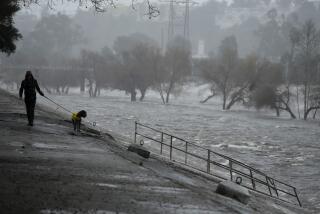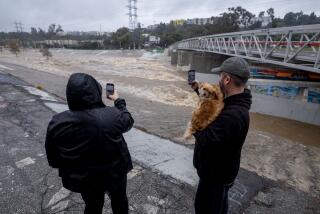Historic floods? Rivers of lava? More to Mars than meets the eye
The Mars Reconnaissance Orbiter has discovered ancient flood channels on Mars, leading scientists to rethink how hydrological activity may have shaped the planet’s fate over the last 2.5 billion years.
Using the Shallow Radar sounder on the orbiter, researchers pinged radio waves deep into Elysium Planitia, a volcanic region on the Martian surface. The radio waves can determine different elemental properties, providing a topographical map of what Mars’ underground looks like.
To the surprise of researchers, the images showed a path of crevices cut into the surface from massive floods from underground water less than 500 million years ago.
The flood channels are sandwiched between two layers of dried lava flows separated by more than 270 million years of inactivity, making them impossible to see from the surface.
The findings revealed that the flood channels of the Marte Vallis, an ancient flood plain within the Elysium Planitia region, ran deeper into the Martian surface and stretched farther across the planet than previously thought.
According to the study, published Thursday in the journal Science, researchers believe they now know how the eastern Elysium Planitia came to look how it does today. Hundreds of millions of years ago water from beneath the surface erupted from Cerberus Fossae, a well-documented pathway of fissures scientists had already established as an ancient waterway.
The flood spread hundreds of miles northeast across Mars, cutting channels into a layer of dried lava flow more than 500 million years old. At first, the waters created a number of channels that spread like veins across Mars, creating Martian islands. The channels appear to be twice as deep and more than 100 miles longer than previously thought, according to the study.
But overtime, the water overwhelmed some of those islands until only two were left. The islands resemble hills that are still visible on the surface today.
Eventually, the channels coalesced into a single, main channel more than 30 miles wide and 370 feet deep. Then, somewhere between 10 million and 270 million years ago, Martian volcanoes erupted and sent massive rivers of lava through the waterways, eating away and burying their well-defined boundaries. When the lava cooled and settled, what was left was the Elysium Planitia flood plain.
Experts are now studying whether the ancient floods may have affected climate change there.
The study was led by scientists from NASA’s Goddard Space Flight Center, the Jet Propulsion Laboratory, the Planetary Science Directorate in the Southwest Research Institute and the Smithsonian Institution.
A copy of the study is available here.
Return to the Science Now blog.







